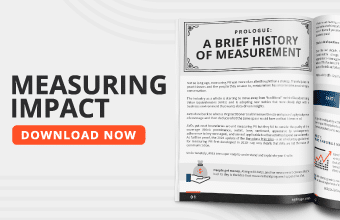Over the years, Google Analytics has received significant updates that have helped marketers come up with new ways to read and analyze data, measure their main KPIs, and monitor important marketing channels. The tool is used by millions of businesses and website owners around the world to track and understand customer behavior across web domains, mobile applications, and offline APIs.
However, following major shifts in consumer behaviors and privacy-driven changes, the current version of Google Analytics isn’t up to par. To keep up with the pace and help business owners get a better ROI, Google is creating a new and more intelligent analytics tool that’s built on the foundations of ‘App + Web properties’, which was introduced in 2019.
The new Google Analytics tool packs several new key features that make it different from the earlier version. In this article, we will discuss these key features and what each of them brings to the table.
Highlights of the new Google Analytics tool
With Analytics, Google aims to make the jobs of marketers easier by combining tracking and advertising to determine how well your audience resonates with your content.
However, many businesses have not fully utilized Analytics to improve their success. As a marketer, the quality of content you display to your audience is one of the most critical factors in ensuring higher search engine rankings on Google. And while you can no longer use Analytics to actually track your rankings, that doesn’t mean the information you gain from this tool can’t be useful to help improve your ranking efforts.
That’s because Google’s Analytics tool is designed to help track individual customer journeys through the purchasing process. It makes it easier for you to identify where their journey starts, that moment when they first discover your website, and where their journey ends, ie. a purchase.
Here are the four main highlights of the new GA tool:
1. Using machine learning to understand consumer trends
Machine learning is an AI-based technology that works by learning from data and improving its accuracy over time through experiences. The new Google Analytics tool utilizes machine learning to quickly identify your high-value customers, and then target them for future marketing and remarketing.
This is a welcome feature, as 78% of professionals believe that AI and machine learning to be the most impactful innovation when it comes to gathering customer data.
Furthermore, viewing analytics reports for decision making has also become easier under the new Analytics system. First, you need to install the Analytics feature on your site, and then enable the tracking of data and user interests. The system will then collect all these details and avail them to you on request.
Besides providing the overall analysis, Google will also serve you with more in-depth reports on affinity categories and in-marketing segments. With these details, addressing the needs of your customers will be much easier.
2. Customer-centric data measurement
Collecting customer data is critical in giving you the information you want to fulfill their needs. Learning how your customers interact with your business can improve their experience over time.
The new version of Analytics offers customer-centric measurements that combine previously used methods with fresh new ways such as marketer provided user IDs and unique Google signals to analyze customer behavior. For instance, the new feature allows you to see how your customers discovered your business before making a purchase, whether it’s through an advertisement on the web, installing your mobile app (if you have one), or being referred to from another site.
Along with that, the new tool makes it easy to get a clear picture of your customers’ life cycles and purchasing patterns. This information is critical in keeping up with the rapid changes in consumer behavior because you might have to make real-time decisions to attract new customers while nurturing older, loyal ones at the same time.
3. A new approach to data controls
Google is also now taking a different approach to data control. As such, the new Analytics breaks down data to a granular level so you can better manage how it is collected, retained, and used. You can then decide whether the data collected will be used for data personalization, and you can also erase data by submitting a request to Google.
4. Target customized audiences
Improving your marketing ROI should be simpler with Analytics because, unlike before, you can now directly target audiences comprising people who are more likely to engage with your business. Customizing your audiences and modifying your advertisements based on those customizations is a massive milestone towards boosting ROI.
Additionally, Analytics now offers detailed reports on conversions across various platforms. This can include conversions from YouTube, Google, email, and other paid channels.
You can also get information from email services and social media channels to help you predict future trends. Several of the most popular email marketing services can now integrate with Google Analytics to set up an automated conversion tracking process and to pass Google’s data over to your email campaign reports.
Utilize these new features to see visible progress
It’s for these reasons that businesses that are using the new Analytics tool are seeing immense progress. They can now more easily identify with the changes taking place within their markets and respond appropriately.
Businesses will be in a better position if they can focus on utilizing these new features successfully. These features make it easier to segment your audiences, track your SEO results, and optimize content for your visitors.








